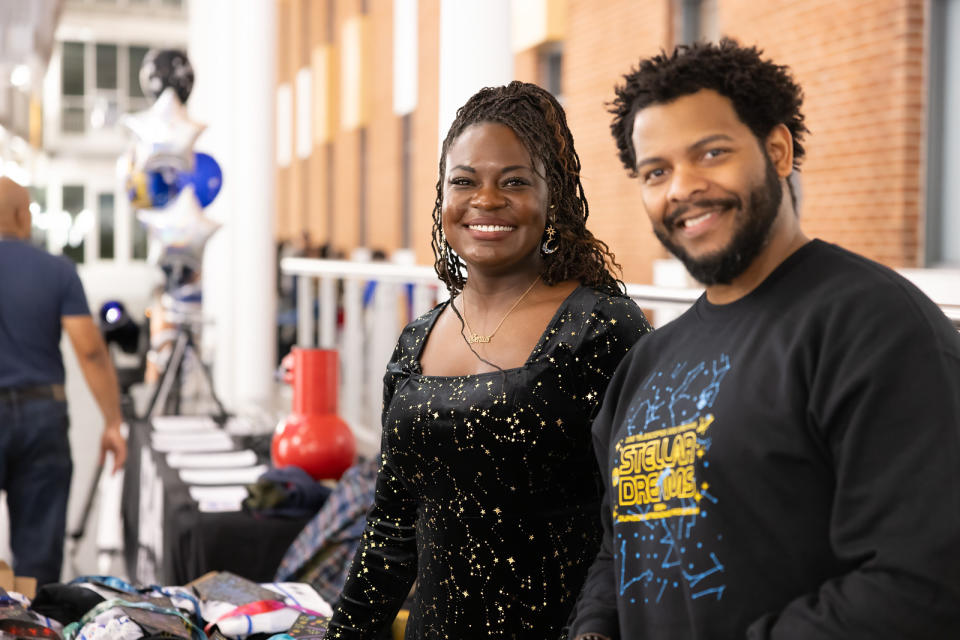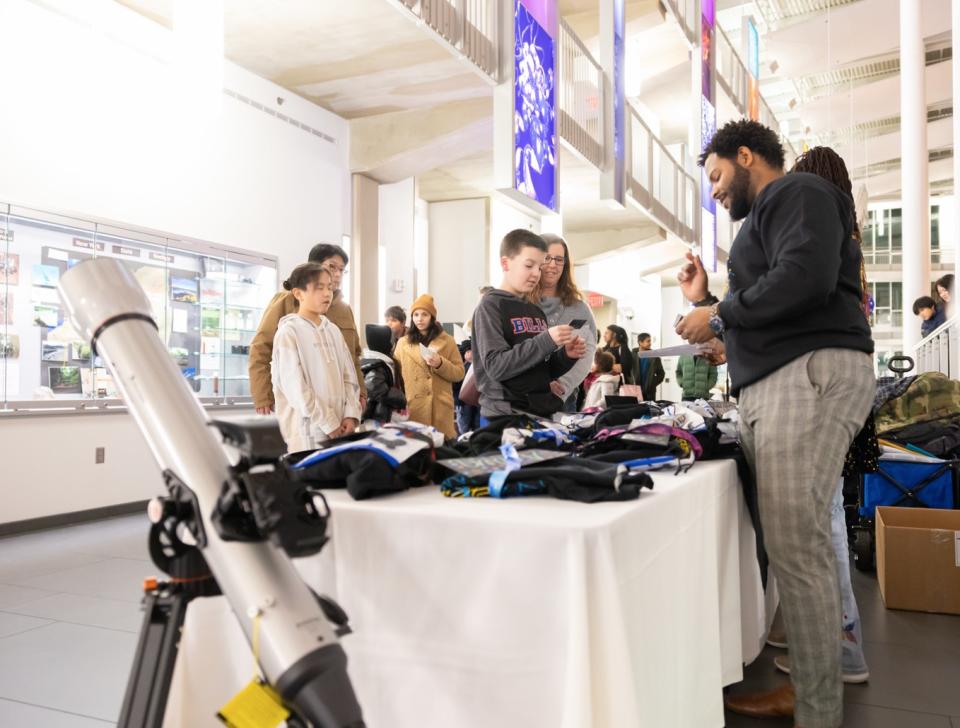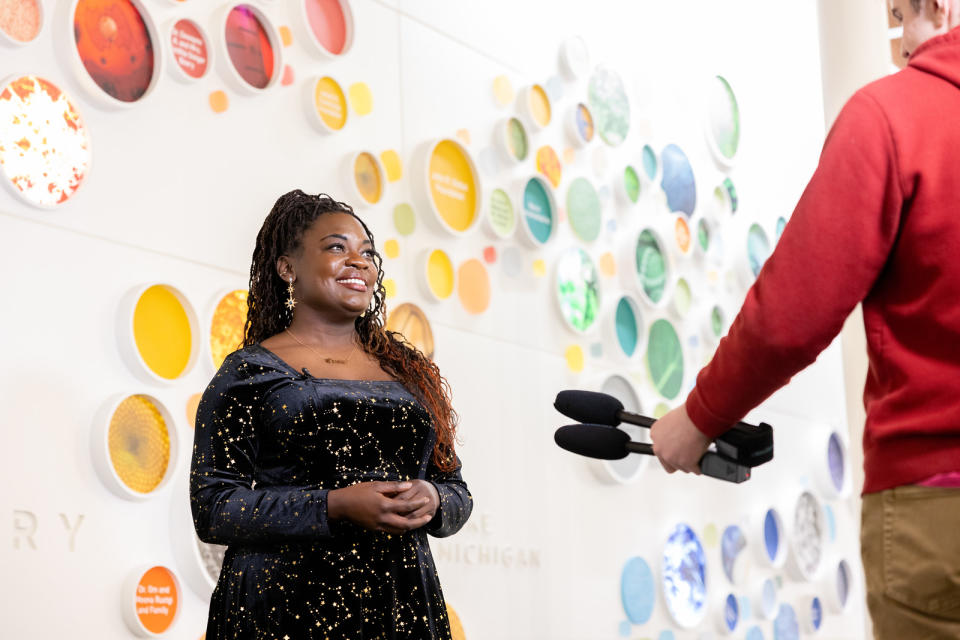An illuminating new program leaves stargazers and science teachers beaming with inspiration.
That program, called Stellar Dreams, is administered by the nonprofit organization The Science Haven. 100 telescopes will be given away, with the goal of encouraging interest in STEM (science, technology, engineering and math) among underrepresented and disadvantaged families.
Founded by molecular biologist Raven Baxter, The Science Haven supports a vision to create an inclusive arena for all shades of scientific dialogue and impactful connections between disparate communities. Through its growing platform of events, educational programs, web series, workshops and public discussions, The Science Haven is committed to advancing science accessibility and building inclusive environments where perspectives, ideas and opinions can be expressed.
Stellar Dreams is the nonprofit’s latest focus, a project that sparks curiosity and provides 100 beginner-friendly Celestron telescopes to 100 underprivileged students in grades 5 through 12 and their families across America, starting with a recent rollout in Buffalo, New York. In addition to donating telescopes, Stellar Dreams also offers recipients the opportunity to join a junior astronomer training program, teaching them how to use their new astronomical tools and providing information about free citizen science research in astronomy.
Related: Best telescopes 2024: for stargazing at galaxies, nebulae and more

Led by Executive Director Baxter and Gamble, a NASA astrophysicist, Stellar Dreams has captured the world’s attention with its innovative outreach efforts. The duo was recently chosen by Uniphi Good for an Astronaut Rock Star Award on National Astronaut Day for being pillars and trailblazing voices in space exploration and STEM/STEAM education. (The “A” in STEAM stands for “art.”)
“The genesis of the Stellar Dreams program was really a little seed that just grew and grew,” Baxter told Space.com. “To go from a simple idea to a successful and award-winning project within six to nine months is a huge achievement. I am extremely honored and so grateful for the support we have been able to find behind Stellar Dreams.
“STEM programs are doing well, but I see a lot of repetition and duplication. As someone who has participated as a facilitator, participant or evaluator, I believe STEM programs deserve more innovation. Today’s children have bigger challenges, better opportunities and innovative solutions needed.” people who controlled them. I thought about my own childhood and what things I was exposed to that cultivated an interest in STEM and remembered my grandparents telescope the day I tried to look at things but couldn’t because their house was wooded and I couldn’t get past the could see trees.
‘So I used it inside to look at things very closely, and that’s how I got interested in molecules. When I got my PhD in science education, I learned about all the literature that supports telescopes, and that early access to tools and resources really has a measurable impact on whether or not someone will pursue a STEM career.”


Gamble is program director of Stellar Dreams. He came on board as an active stakeholder and felt this project aligned with his own career initiatives.
“Raven is very good at setting up a Bat-signal,” he told Space.com. “She told me this idea and I thought it was fantastic. Stellar Dreams was very close to home for me. Being a black astrophysicist myself, I know the numbers. I was one of those kids. Now I can put my expertise to good use.” know that they want these kinds of telescopes and they want to be able to look at these things in the night sky and have access to the local astronomy community.
“I used some of my artistic talents and designed little astronomy cards and posters for juniors through our sponsors and partnerships so they have tangible things, and I was able to bring in NASA swag and stickers. They got a big bag of things along with the telescopes. The Buffalo Astronomical Association helped teach telescope lessons and organized a planetarium show, and we were able to arrange for children to be accepted directly into the association as junior members.
This ambitious project has reached its goal of obtaining 100 telescopes, but they are still raising funds for programming costs after kicking it off with 25 Buffalo students.
“We want to continue this program in other cities in the DC area and North Carolina,” Baxter said. “I’m kind of a hometown hero, and it felt really good to give back to the community that invested so much in me. The faces of those kids were so bright and happy, and their families were deeply involved with us too program I get updates from the families, and they are just grateful for the opportunity. A telescope is kind of a status symbol for them, that is also a luxury.


RELATED STORIES:
— NASA and ESA experts address diversity and inclusion in space
– Space travel has a diversity problem – and large institutions such as universities can do something about it
– Citizen scientists find remarkable exoplanet named after Harry Potter character
Stellar Dreams recipients will receive a solid mid-range Celestron Travel Scope 80 telescope. The scope also offers a phone holder that allows students to take photos on their smartphones. The comprehensive kit even comes with a start tracker app and a small laser starfinder tool.
“Some of these kids have never touched a telescope,” Gamble said. “They didn’t know it had lenses and mirrors in it. So they had to put together their own telescope and then go out and use it next to larger telescopes that other people had brought with them, and ask experts like myself what they see. It was a full circle moment for me, growing up as one of those kids and now being able to give them a telescope. It was really amazing. Based on my involvement with the Stellar Dreams initiative, it helped me get a NASA agency medal. one of the best, so I’m forever grateful too.
To learn more about the Stellar Dreams Project, partnership opportunities, and how you can donate to this cause, visit them at their online headquarters.